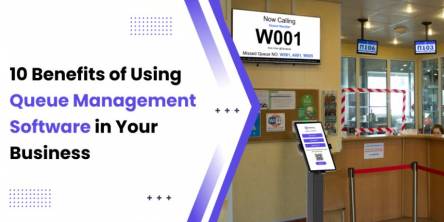How to Audit and Improve Your Current Asset Lifecycle Management Process?

Effective asset lifecycle management is crucial for businesses to optimize resources, reduce costs, and maximize productivity. However, many companies need help to maintain an efficient process.
In this article, we will understand asset lifecycle management and then explore how you can audit your current asset lifecycle management process and identify areas that need improvement.
Implementing these asset lifecycle management best practices can enhance your organization's operational efficiency and boost overall performance.
Understanding the Asset Lifecycle
Before diving into the auditing process, it is essential to understand the different stages of the asset lifecycle:
1. Acquisition
The first stage involves procuring assets needed by your organization. This includes conducting research, negotiating contracts with suppliers or vendors, and ensuring compliance with regulations.
2. Allocation and Deployment
In this stage, assets are assigned to specific departments or individuals for their respective purposes. A smooth allocation process minimizes delays and ensures that assets are used effectively within the organization.
3. Maintenance and Tracking
Regular maintenance activities are critical to prolonging an asset's lifespan while minimizing breakdowns or failures. Additionally, it is vital to track usage patterns and monitor performance to identify any potential issues.
4. Disposal or Replacement
When assets reach their end-of-life phase or become obsolete or inefficient, they need proper disposal or replacement. This involves adhering to environmental regulations for disposing of electronic equipment responsibly.
Conducting an Audit of Your Asset Lifecycle Management Process
1. Assess Current Processes
Begin by reviewing all existing policies and procedures related to asset management within your organization. Gather feedback from stakeholders involved in various stages of the lifecycle process, such as procurement officers, IT employees, facility managers, etc.
2. Identify Key Metrics
Define measurable criteria that align with your business goals for each stage of the asset lifecycle. Examples include time to procure assets, average lifespan before replacement, repair, and response time intervals when addressing maintenance issues.
3. Data Collection and Analysis
Retrieve relevant data such as asset purchase records, maintenance logs, repair requests, and asset inventory lists. Utilize technology-based tools and software solutions for efficient data collection and analysis. Identify any patterns or recurring issues through a comprehensive review.
Tips for Improving Your Current Asset Lifecycle Management Process
1. Automation
Consider implementing automated systems to streamline various stages of the lifecycle process. Use barcode or RFID technologies to track assets accurately, automate maintenance schedules and notifications, and generate reports for accountability.
2. Centralized Asset Database
Maintain a unified database encompassing all vital information related to your organization's assets. This enables easy monitoring, tracking, and tracing of every asset throughout its lifecycle while facilitating more informed decision-making in the acquisition and disposal process.
3. Regular Maintenance Schedule
Adopt a proactive maintenance strategy instead of a reactive approach when dealing with your assets. Create a structured schedule for regular inspections and preventive maintenance activities to minimize breakdowns or failures that can hinder productivity.
4. Training and Education
Ensure that all stakeholders involved in the asset management process receive proper training on using the designated systems effectively. This allows them to understand their responsibilities fully, reducing errors in tracking, documentation, maintenance, and execution.
5. Vendor Management
Establish strong relationships with vendors or suppliers by regularly evaluating the quality of their products or services. Engaging in effective communication will enhance collaboration during procurement activities.
6. Periodic Audits
Continuously monitor your asset lifecycle management process by conducting periodic audits at regular intervals. This ensures ongoing compliance with policies/procedures while allowing you to identify potential bottlenecks or areas requiring further improvement.
Conclusion
Auditing your current asset lifecycle management process is crucial for identifying inefficiencies and areas where improvements can be made within your organization. By applying these strategies discussed above, you will optimize operational efficiency while maximizing productivity and minimizing costs.
Achieving effective asset lifecycle management is an iterative journey that requires constant evaluation and adaptation based on changing business requirements. Embark on this journey and unlock the potential for continuous improvement within your organization.
Similar Articles
The demands of the modern world dictate that a firm must provide its customers with excellent experiences. An essential aspect of this process, which is often randomly overlooked, however, remains how companies handle and organize queues
Discover how sustainable practices and technology in fleet management reduce costs, cut emissions, and drive eco-friendly operations for a greener future.
Boost your business success with CRM strategies. Learn how to enhance customer relationships, streamline operations, and drive performance with key insights.
Discover effective strategies to reduce employee turnover, improve retention, and build a motivated workforce by enhancing work culture, management, and compensation.
In a rapidly evolving business landscape, knowledge is a vital asset that can propel an organization to new heights. Effective management of this knowledge is crucial, especially when it ties directly to operational efficiency and competitive edge. As such, embracing tools that enhance this aspect of business operations becomes paramount for success
Discover why ongoing professional development is crucial for managers to stay sharp, build leadership skills, and succeed in an evolving workplace.
Due to the dynamic nature of business today, efficiency, flexibility, and access to specialized expertise are major drivers of success. As firms seek ways to stay ahead of the competition, VA outsourcing is a strategic solution that can be implemented. In doing so cooperatively with a virtual assistant outsourcing company, a host of advantages can be gained to project any operation to great heights.
Creating a workplace that promotes employee health and productivity involves more than simply providing comfortable chairs and desks. While these elements are foundational, a comprehensive ergonomic approach addresses a range of factors that contribute to a healthier and more efficient work environment.
Discover effective strategies to seamlessly implement IT management software in your organization, ensuring a smooth transition and optimized performance.









